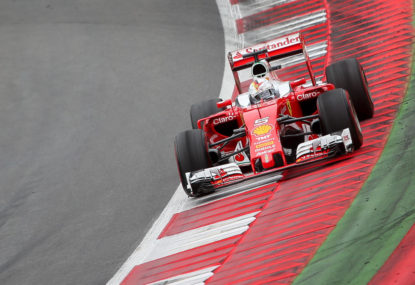Chinese Grand Prix talking points: Stroll has become the most hated F1 driver in a long time - but that's simply an unfair call!
The absolute vitriol against the Canadian that has come from the incident is beyond reprehensible.

After Monday’s so-called ‘Paradise Papers’ revelations it would seem life now comprises only two certainties: death and Ferrari threatening to quit Formula One.
Last week the FIA and Formula One Management presented their broad-strokes vision to replace Formula One’s much-maligned power units, and sure enough the trigger-happy Italian team issued another of its threats to exit the racing series that made it a household name.
“There are a couple of things we don’t necessarily agree with,” Ferrari CEO Sergio Marchionne told analysts in a conference call. “One is the fact that somehow powertrain uniqueness is not going to be one of the drivers of distinctiveness …”
“I would not countenance this going forward.”
The proposed changes are deceptive in their complexity. By name the turbocharged 1.6-litre V6 hybrids would be identical, but prescriptive dimension parameters, the removal of the cutting-edge MGU-H, the redesign of the MGU-K to behave like a more powerful KERS of 2009–13 and the 3000-RPM boost amount to a clean sheet for engine builders.
The FIA and FOM believe they have struck a necessary balance. The FIA has maintained some of the eco components that give the pinnacle of motor racing engineering credibility while FOM has won extra noise and less focus on technical minutiae on behalf of the fans. Both will savour the possibility of new engine suppliers diversifying the grid.
Ferrari isn’t alone in its distaste. Mercedes remains sceptical of the expensive engine redesign and Renault is disappointed by the shift away from road relevance the removal of the MGU-H in particular signifies. Honda has thus far remained silent, but given the Japanese company returned to Formula One principally to benefit its road car engineering one can imagine it is thinking along similar lines.
“It does create some concern,” Renault managing director Cyril Abiteboul told Motorsport.com. “Fundamentally what does being an engine manufacturer mean?”
One can understand the argument – all four of Formula One’s engine manufacturers build these technologically advanced power units at substantial cost not simply to ‘go racing’ but to draw back some degree of benefit for their broader businesses.
Formula One is and always will be a marketing and branding exercise for the big spends of auto brands. Removing the opportunity to differentiate themselves from their competitors makes the expense less worthwhile.
“The fact that we now appear to be at odds in terms of the strategic development of this thing and we see the sport in 2021 taking on a different air is going to force some decisions on the part of Ferrari,” Marchionne said.
Manufacturers are further concerned the rules are being changed principally to entice new engine builders by forcing all to start from scratch, the worry being that new entrants will have clear air in the lead-up to 2021 while today’s manufacturers will have to run their current programmes parallel with this new design project for a costly three years.
But the cause for greatest consternation is that regulation changes usually herald a shake-up in the competitive order. Regulatory stability, on the other hand, brings convergence, as has been the case since 2014 with Ferrari and Renault catching up to Mercedes’s class-leading power unit.
However, despite the vim and vigour with which the engine builders, spearheaded by Ferrari, and the FIA and FOM will fight their good fights, the engine regulations are a tiny part of the post-2020 equation.

(GEPA Pictures/Red Bull Content Pool).
Indeed, despite the bluster from the likes of Red Bull Racing in particular – a critical swinging voter between the big cashed-up teams and the independents – to the effect that engines play too big a part in F1, engine disparity is far from the biggest performance differentiator.
A Williams race history graph published by James Allen after the United States Grand Prix illustrates a significant gap between the haves and have-nots. Not only do drivers of the top three teams – powered by three different engines – accelerate rapidly away from the rest of the field, but Esteban Ocon, the highest placed midfield driver, finished the race more than 90 seconds behind Lewis Hamilton, yet both had the same engine bolted into the back.
The truth is, as it always has been, that money is the biggest performance differentiator, and despite the change in commercial ownership, the same skewed financial system that sees the big team earn disproportionately from the prize fund regardless of finishing position remains engrained in contract until 2020.
Which brings Formula One to today: Tuesday, 7 November 2017, conveniently the date of the next strategy group meeting, where the FIA and FOM will present teams with their regulatory and commercial visions, including the expected foreshadowing of the long-awaited cost controls that should begin levelling the playing field, for 2021 and beyond.
Will the sport’s participants be able to absorb greater engine costs if the general cost of competition is reduced? More to the point, will they want to do so given their ability to outspend their rivals is a source of power?
The proposed power unit regulations is but a small component of a larger battle ready to be waged over the future of Formula One. The question is how long and how bloody it might become.